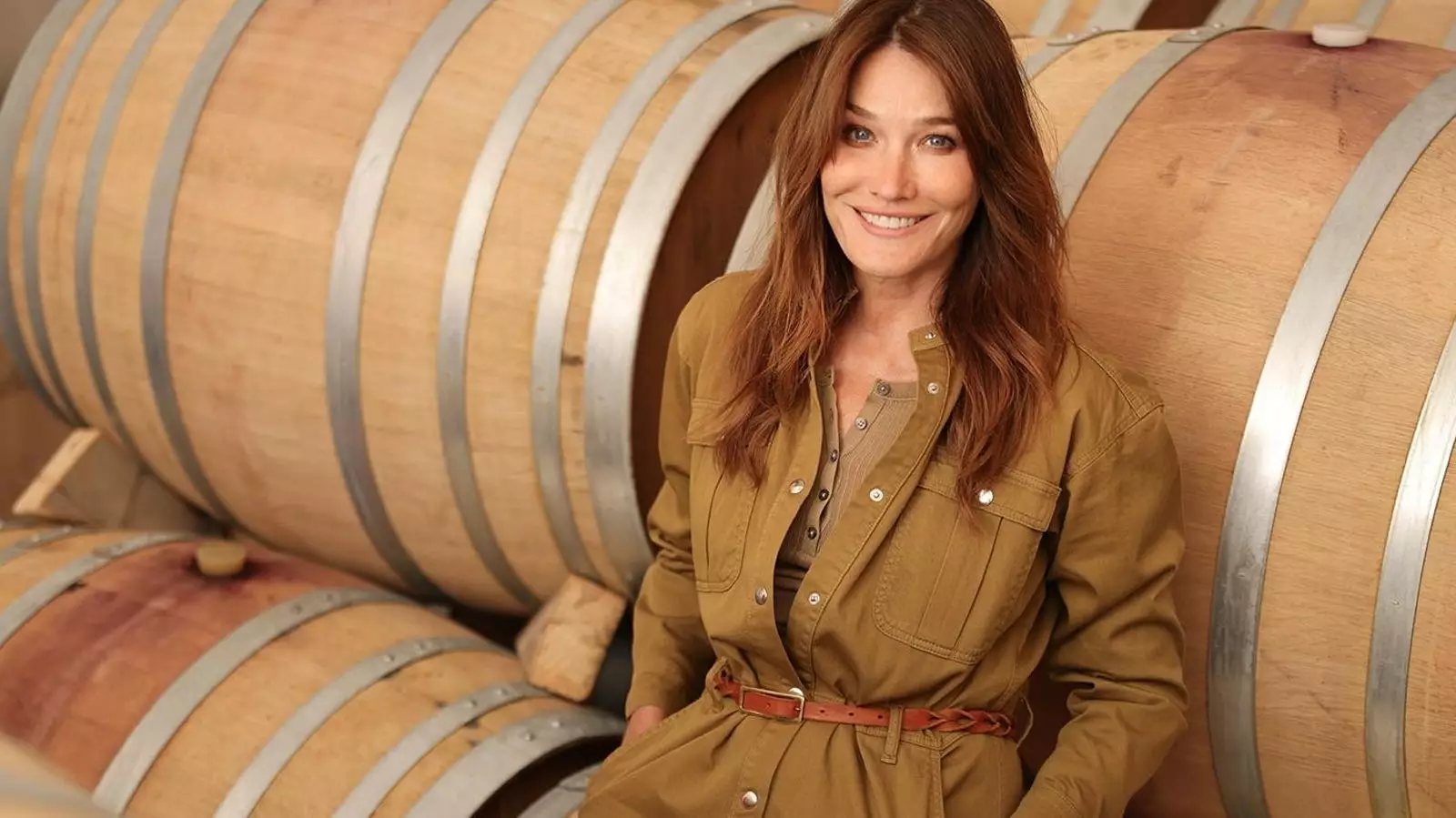In an era where the global wine landscape is flooded with brands vying for attention, the story of Roseblood is nothing short of revolutionary. It’s a testament to daring innovation that defies traditional expectations of Provence wines, showcasing that luxury and storytelling can elevate a product beyond mere consumption into a cultural statement. This isn’t just about creating another rosé; it’s about redefining what high-end wine can represent in an increasingly competitive market.
The Château d’Estoublon project, spearheaded by high-profile investors including Carla Bruni and Nicolas Sarkozy, exemplifies a strategic shift from conventional vineyard pursuits towards a curated lifestyle experience. Unlike many of its contemporaries that rely heavily on lifestyle aesthetics or fleeting trends, Roseblood embodies an unapologetic confidence—a wine crafted with deliberate complexity, precision, and a narrative that resonates deeply with discerning consumers. Its approach is a bold departure that emphasizes authenticity and craftsmanship rather than superficiality.
An Authentic Identity in a Saturated Market
In the crowded world of premium rosés, the tendency has been to chase accessibility, Instagrammability, and fleeting trends. Brands like Whispering Angel have capitalized on viral branding, positioning rosé as a casual, trendy lifestyle accessory. In stark contrast, Roseblood refuses to pander to these superficial metrics. Instead, it aims for longevity and depth, positioning itself as an emblem of genuine terroir and artisanal integrity.
The choice to develop a wine that embraces restraint—eschewing fats, glycerols, or dominant fruit bombs—signifies a conscious rejection of the blue ocean of pale-pink, fizzy bottles that often flood the market. Instead, this wine invites connoisseurs to appreciate complex layers: wild strawberries, citrus zest, minerality, and salted almonds. It demands patience, reflection, and a sense of place—core qualities that elevate it beyond mere drinks and into a realm of curated luxury. It’s a statement that premium rosé can be serious, structured, and built to stand the test of time.
Strategic Artistry: Crafting a Living Brand
The success of Roseblood is rooted in its meticulous craftsmanship, but what elevates it further is the masterful branding strategy behind it. This isn’t an accident of market timing but a carefully engineered repositioning of Château d’Estoublon as a lifestyle beacon. The estate has diversified into hospitality, culinary experiences, and even non-alcoholic innovations like L’Excessive—a sparkling beverage aimed at catering to evolving consumer preferences.
This broader approach aligns with a new paradigm where wine is seen not just as a product but as an experience. Bruni’s influence underscores the importance of emotional storytelling—emphasizing authenticity and the art of living—elements that resonate profoundly in a luxury context. The estate’s manicured yet understated aesthetic, combined with its dedication to environmental sustainability, allows it to craft an aspirational narrative rooted in real values rather than superficial luxury display.
Importantly, the strategic use of high-altitude vineyards, certified sustainable practices, and limited, selective distribution feeds the aura of rarity and exclusivity. It’s a deliberate move to position Roseblood not as a mass-market rosé, but as an aspirational icon for connoisseurs who value quality and provenance—a stark contrast to brands built predominantly on ubiquity and trendiness.
Disrupting the Traditional and Embracing Future Growth
This approach confronts the conventional wisdom that luxury must be flashy or accessible to succeed. Instead, Roseblood’s ascendancy signals a possible shift within the luxury wine universe—one that values depth, narrative, and environmental responsibility as core pillars. The inclusion of a non-alcoholic sparkling alternative illustrates an innovative mindset, aligning with global health trends and a desire for inclusivity without diluting luxury.
Furthermore, the international expansion into over 20 countries, with premium placements in high-end restaurants and boutique retailers, indicates a carefully curated distribution plan. It isn’t about flooding markets or building a brand based on volume but cultivating a select global community that appreciates artistry in every bottle.
The early sell-outs and reserved allocations for top-tier dining establishments suggest Roseblood has struck a chord—one that balances exclusivity with aspirational appeal. Its future, bolstered by potential fashion collaborations and cross-category luxury projects, hints at an integrated lifestyle experience, not just a wine.
The New Paradigm of Art de Vivre in a Bottle
Ultimately, Roseblood’s rise exemplifies a broader cultural evolution. Luxury is no longer just about ostentation but about conveying emotion, storytelling, and a sense of purpose. Carla Bruni’s ethos—fusing authenticity with elegance—permeates every aspect of this project, from vineyard practices to branding.
This new wave challenges the long-held notion that luxury must be accessible to all in superficial ways. Instead, it champions restraint, craftsmanship, and deep connection—values that will likely define the future of high-end wine. Roseblood isn’t just a product; it’s an embodiment of an aspirational lifestyle rooted in artistic expression and authentic storytelling—an audacious, refreshing take on what luxury can—and should—be.


Leave a Reply